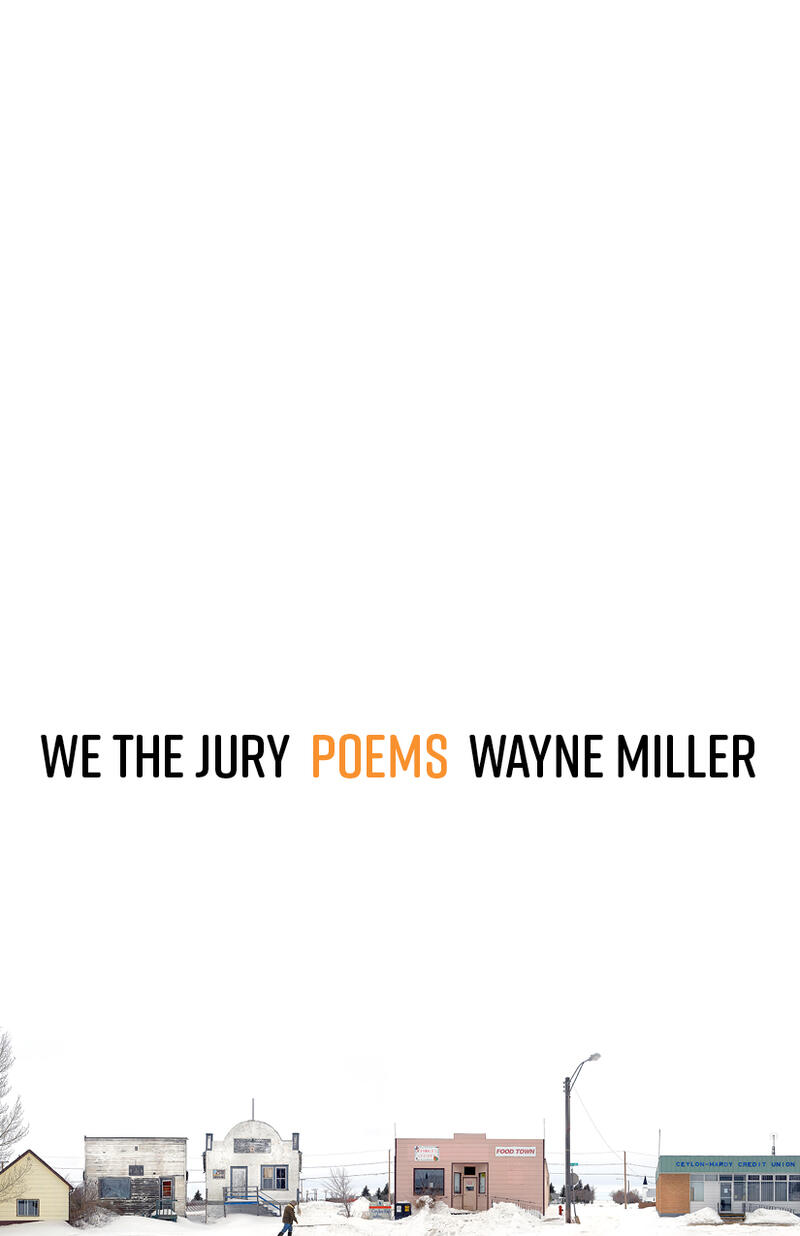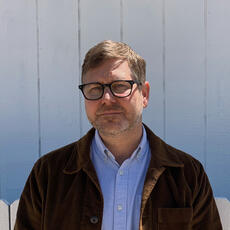Impulse of the American "We": A Cover Image Story

An essay by Wayne Miller
I discovered—and fell in love with—Danny Singer’s work at the Denver Art Museum, which had a small exhibition of his photographs in the winter of 2015–16. My daughter was four then, and the Singer show was a regular stop on our way to the children’s area.
Singer’s photographs of small-town Main Streets are digitally and seamlessly constructed from multiple images so that the entirety of one side of a street is presented—which simultaneously isolates, distorts, and clarifies the scene. We seem to be viewing the buildings from an impossible distance well beyond whatever buildings must stand just across the way. This effect is even more pronounced in the Big Sky series, where Singer allows the sky to take up most of the image, making the buildings disorientingly small. It’s that idea in particular—the claustrophobic smallness of human activity compressed beneath the massive, empty air above—that kept drawing me back to Singer’s work.
When Milkweed’s book designer Mary Austin Speaker and I began discussing ideas for the cover of We the Jury, the only thing we were sure of was that we couldn’t use images of actual courtrooms or courthouses. (No jury boxes! No scales! No close-ups of gavels!) “Jury” in the book is a metaphor (for something like humanity’s work of self-judgment, as in the title poem where a jury is tasked with passing judgment on itself), and anything that literalized it would, we thought, sink the argument. We tried scenes of crowds, apartment windows, festivals, and protests—all “juries” in their ways—but none seemed right. As soon as Mary placed the title over a section of Singer’s winter image of the tiny town of Ceylon, several hundred miles due north of Denver, I was pretty sure we’d found it.
Our current environment of social media, 24-hour news cycles, and righteously wielded conspiracy theories is one in which we are, I believe, too often rewarded for offering simplistic, prefabricated judgments and arguments, rather than digging into the layered, competing complexities of difficult questions. As Yeats says, poems arise “out of the quarrel with ourselves,” and in We the Jury I’ve tried to push back against easy judgments (my own in particular!) by attempting to write my way into situations and subjects where I find no clear or comfortable place to stand.
For example, the poem “On Progress” addresses the fact that my grandmother attended the last public execution in America—which was certainly a shit-show of American racism and violence, the sort of event we might, today, feel both horrified by and quietly superior to. But before we get too smug about having eradicated public executions, we should remember that more than a million people have witnessed Saddam Hussein’s execution on YouTube—that democratizing technology that has also been a valuable tool for pushing back against oppression around the world. How, exactly, should we feel about technological “progress” and the limits we’ve placed on violent spectacle? I’m not sure.
We the Jury is also an elegiac book, addressing the deaths and illnesses of friends, as well as more “public” events such as the Pulse shooting and the Great Recession. Overall, it is a book of uncertainty and sadness about America, historical progress, and middle age, and I think those ideas of indeterminacy and elegy come together in the juxtaposition of Singer’s image and the title.
First of all, the photograph itself seems profoundly desolate, with all that blank sky (it’s hard, at first, even to identify it as sky) feeling like a depiction of grief, emptiness, and loss. I also started wondering how the “we” in the title should be read in relation to the image. Are “we” the town? Perhaps. Do the buildings represent commerce? A cultural center? Economic failure? American decline? As Mary pointed out, the image could signify the outsized impact of rural America on American politics—and though We the Jury is not a particularly political book, it’s certainly a book that thinks about the socio-historical moment in which that impact is felt.
But the buildings also seem to exclude the viewer, and the “we” could just as easily be whoever is observing those buildings from a distance and passing judgment on them (since judging rural America is indeed a thing that “we” in cities and on the Left are sometimes all-too-happy to do). And of course, the image is actually of Canada, not the United States, though I think most US viewers will assume it’s of the American Midwest. And isn’t that an impulse of the American “we”—to place ourselves too often at the center of the world?
Those sorts of indeterminacies—a “we” that’s here and there, us and them—represent quite well, I think (I hope!), the sort of work that We the Jury is trying to do. Which is why I’m so thrilled Singer gave us permission to use his stunning photograph on the cover.
